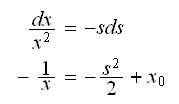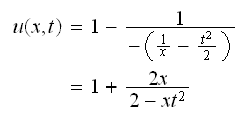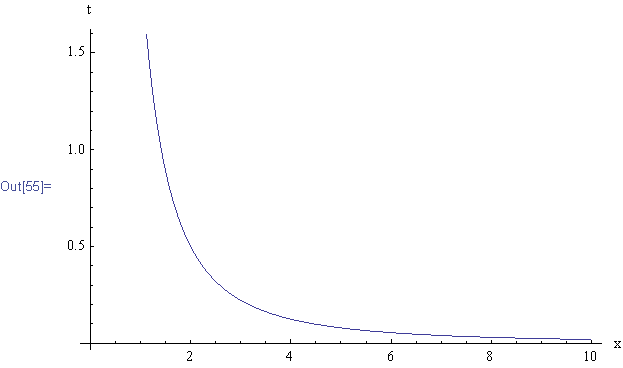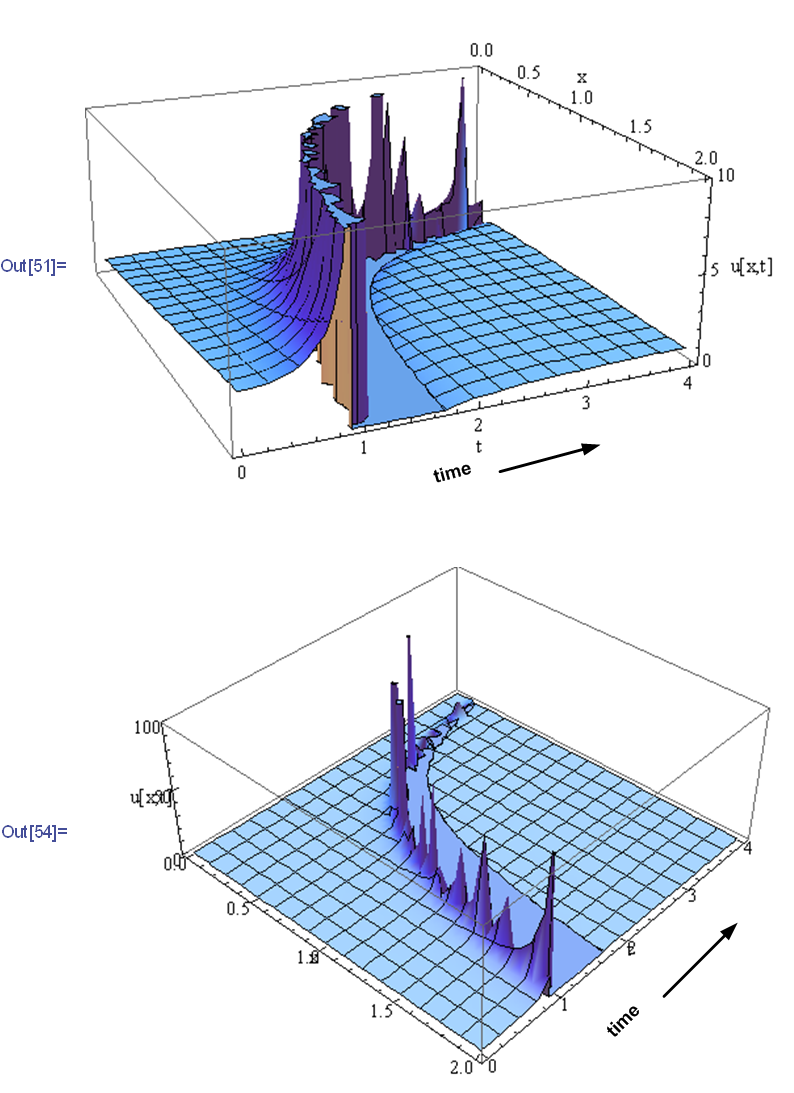
practise problems for solving first order PDEs using method of characteristics
by Nasser Abbasi
Solve


Solution
Seek solution where
 constant,hence
constant,hence

Compare to (1) we see that
 or
or
 and
and
 ,
but since
,
but since
 then
then
 ,
and this has solution
,
and this has solution
 but
but

 hence
hence

Now at
 ,
the solution is
,
the solution is
 but this solution is valid any where on this characteristic line and not just
when
but this solution is valid any where on this characteristic line and not just
when
 .
hence
.
hence

But
 from (2), hence
from (2), hence

Solve


Solution
Seek solution where
 constant,hence
constant,hence

Compare to (1) we see that
 or
or
 and
and
 ,
but since
,
but since
 then
then
 ,
and this has solution
,
and this has solution

but
 hence
hence
 Hence
Hence
 At
At
 ,
,

Now we are told the solution at
 is
is
 ,
or
,
or
 but
this solution is valid any where on this characteristic line and not just when
but
this solution is valid any where on this characteristic line and not just when
 .
hence
.
hence

Replace the value of
 obtained in (2) we obtain
obtained in (2) we obtain

Hence

Solve


Solution
Seek solution where
 constant,hence
constant,hence

Compare to (1) we see that
 or
or
 and
and
 ,
but since
,
but since
 then
then
 hence we need to solve
hence we need to solve

but
 hence
hence
 Hence
Hence

At
 ,
,

Now we are told the solution at
 is
is
 ,
or
,
or
 but
this solution is valid any where on this characteristic line and not just when
but
this solution is valid any where on this characteristic line and not just when
 .
hence
.
hence

Replace the value of
 obtained in (2) we obtain
obtained in (2) we obtain
 Hence
Hence
To avoid a solution
 which blow up, we need
which blow up, we need
 ,
hence
,
hence

 for
example,
for
example,
 and
and
 will not give a valid solution. so all region in
will not give a valid solution. so all region in
 plane in which
plane in which
 is not a valid region to apply this solution at.
is not a valid region to apply this solution at.
The solution breaks down along this line in the
 plane
plane

To see it in 3D, here is the
 solution that includes the above line, and we see that the solution below the
line and the above the line are not continuous across it. ( I think there is a
name to this phenomena that I remember reading about sometime, may be related
to shockwaves but do not now know how this would happen in reality)
solution that includes the above line, and we see that the solution below the
line and the above the line are not continuous across it. ( I think there is a
name to this phenomena that I remember reading about sometime, may be related
to shockwaves but do not now know how this would happen in reality)



Solution
Nonhomogeneous pde first order.
(TO DO)